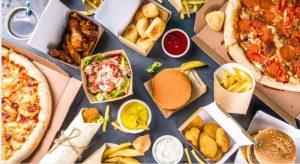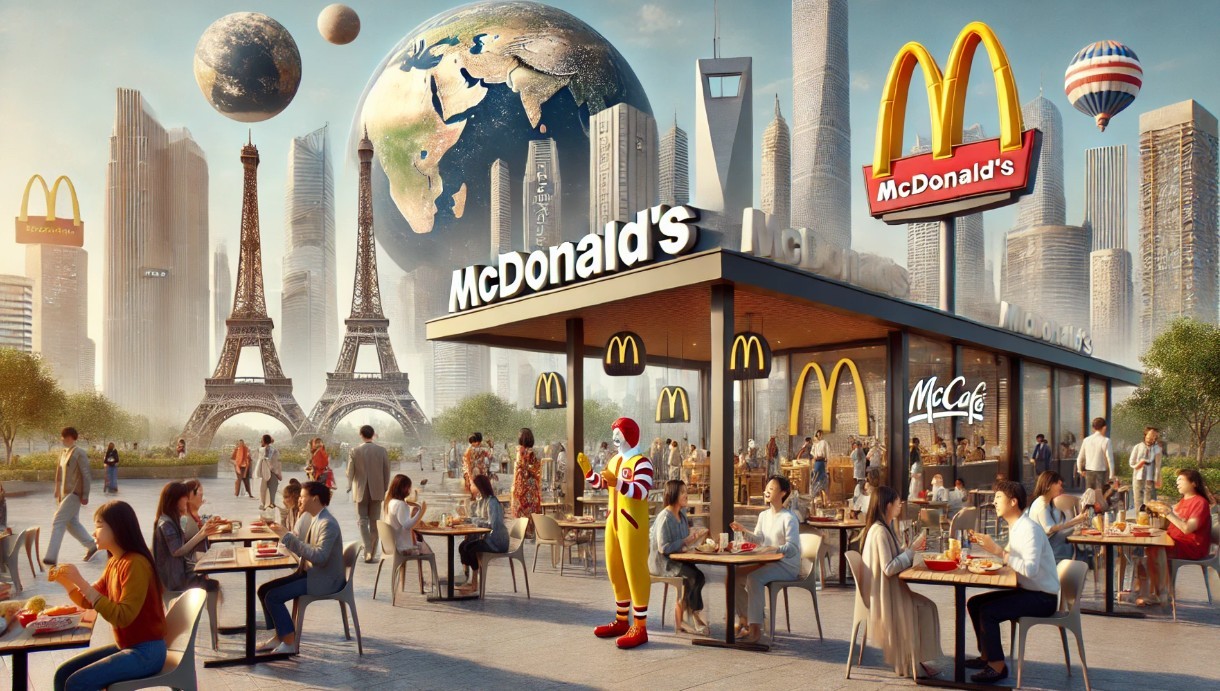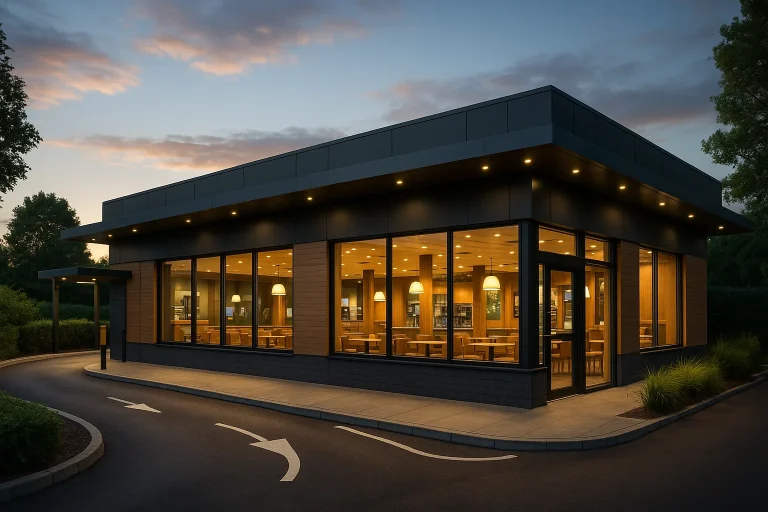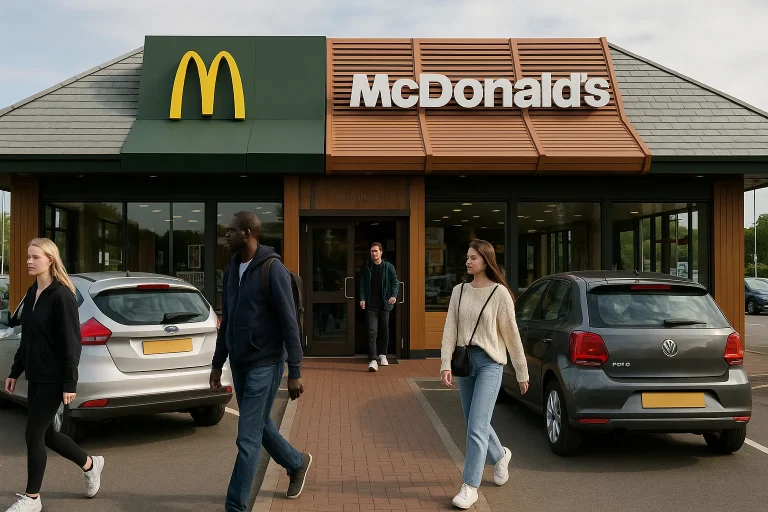Have you ever thought about how many McDonald’s restaurants exist across the globe? The iconic golden arches are more than just a symbol of fast food; they represent a global phenomenon.
From bustling cities to quiet towns, McDonald’s has become a household name. In 2024, the brand continues its legacy as one of the largest and most influential fast-food chains in the world.
But just how many McDonald’s restaurants are there, and what makes them such a dominant force in the fast-food industry?
How Did McDonald’s Expand Globally?

McDonald’s founders began its journey in 1940 as a barbecue restaurant run by brothers Richard and Maurice McDonald in San Bernardino, California.
The turning point came in 1955 when Ray Kroc, a milkshake machine salesman, saw potential in their system and opened the first franchised McDonald’s in Illinois.
Key Phases of Expansion
- The 1960s and 1970s: McDonald’s international expansion began in 1967, with its first outlets outside the United States opening in Canada and Puerto Rico.
- The 1990s: The fall of the Soviet Union allowed McDonald’s to open its first store in Moscow, symbolising Western influence. The same period saw its expansion into Asia, with stores opening in China, India, and South Korea.
- 2000s and beyond: McDonald’s now operates in 118 countries, adapting its menus and operations to cater to diverse cultural and economic landscapes.
How Many McDonald’s Are There in the World?
As of 2024, McDonald’s operates over 42,000 restaurants worldwide, reinforcing its position as the largest fast-food chain in terms of global reach. These restaurants serve approximately 69 million customers daily across 118 countries.
Breakdown of Operations
McDonald’s restaurants fall into two main categories:
- Company-operated outlets: These account for approximately 5% of the total number of locations.
- Franchised outlets: Making up around 95%, these are run by independent franchisees who adhere to McDonald’s strict standards.
Regional Presence
McDonald’s has strategically spread its operations across the globe with the following regional distribution:
| Region | Number of Restaurants (2024) |
| North America | ~14,500 |
| Europe | ~7,500 |
| Asia-Pacific | ~11,000 |
| Latin America | ~2,200 |
| Middle East & Africa | ~1,800 |
Emerging Markets and Growth
- While North America and Europe remain significant markets, much of McDonald’s growth comes from emerging economies in Asia and Africa.
- Countries like China and India have seen rapid expansion, with McDonald’s continuing to open new outlets to meet growing demand.
Which Countries Have the Most McDonald’s Restaurants?

The distribution of McDonald’s restaurants varies significantly across countries, influenced by factors such as population, economic development, and market preferences.
Top Countries by Outlet Numbers
- United States: As the birthplace of McDonald’s, the United States leads with over 13,500 restaurants. It accounts for nearly one-third of McDonald’s global locations.
- China: With over 5,000 outlets and counting, China represents one of McDonald’s fastest-growing markets. Aggressive expansion plans aim to double this number by 2030.
- Japan: Japan has more than 2,900 restaurants, making it the third-largest market. The brand’s success here is largely due to its ability to localise its menu and marketing strategies.
- Germany: As McDonald’s largest market in Europe, Germany is home to over 1,450 restaurants, reflecting the chain’s popularity among European consumers.
- Canada: With more than 1,400 outlets, Canada remains a stronghold for McDonald’s in North America.
Smaller Markets and Unique Facts
- In countries like Monaco and Vatican City, McDonald’s operates only one outlet, often becoming a novelty destination.
- Iceland famously has no McDonald’s restaurants after the brand exited the market in 2009 due to high operating costs.
How Does McDonald’s Franchise Model Drive Expansion?

The franchise model is the backbone of McDonald’s rapid global expansion and continued dominance in the fast-food industry. By allowing local entrepreneurs to operate under the McDonald’s brand, the company achieves widespread growth while reducing corporate risk.
How the Franchise Model Works?
McDonald’s partners with franchisees who pay an initial fee and ongoing royalties (based on sales). In return, franchisees receive:
- Brand Equity: The ability to leverage McDonald’s global reputation.
- Support Infrastructure: Access to training, marketing resources, and supply chain management.
Advantages of Franchising
- Scalability: Franchising allows McDonald’s to open restaurants quickly, even in distant and diverse markets.
- Local Insights: Franchisees bring knowledge of local consumer preferences, enabling McDonald’s to adapt its offerings effectively.
- Reduced Capital Investment: Unlike company-operated outlets, franchised restaurants shift much of the financial burden to the franchisee.
Notable Franchise Success Stories
- India: Franchisees in India introduced innovative vegetarian options like the McAloo Tikki Burger, catering to local dietary preferences.
- China: Local franchisees have been instrumental in securing prime locations and navigating regulatory landscapes.
What Is the Impact of McDonald’s on Global Fast-Food Culture?

There is no denying McDonald’s impact on the fast-food sector and world culture. Its influence extends across social, cultural, and economic spheres.
Economic Contributions
- Employment Generation: McDonald’s employs millions worldwide, from restaurant staff to supply chain workers.
- Boosting Local Businesses: By sourcing ingredients locally in many countries, McDonald’s supports regional agriculture and suppliers.
Cultural Influence
- Introduction of Western Fast Food: McDonald’s has been a driving force in introducing fast-food culture to regions where it was previously unfamiliar.
- Localised Menus: By adapting to regional tastes, McDonald’s has popularised the concept of “glocalisation.”
Examples:
- India: Vegetarian McSpicy Paneer.
- Japan: Ebi Filet-O (shrimp burger).
- Mexico: McMolletes (Mexican-style breakfast dish).
Social Criticism and Challenges
- Homogenisation of Culture: Critics argue that McDonald’s contributes to the loss of local culinary traditions.
- Health Concerns: With rising awareness about obesity, McDonald’s has faced backlash for promoting high-calorie, processed foods.
- Environmental Impact: The company has responded to criticisms by adopting eco-friendly packaging and setting goals for carbon neutrality by 2050.
Global Icon Status
- McDonald’s has become a symbol of globalisation, representing both the benefits and challenges of cultural exchange.
- Its golden arches are among the most recognisable symbols in the world, often evoking strong reactions—both positive and negative.
What Are Some Fun Facts About McDonald’s Global Operations?

McDonald’s operations are not only vast but also filled with fascinating trivia that reflects its global reach and cultural adaptability. Here are some fun and surprising facts about the brand:
McDonald’s Serves Millions Every Day
- Globally, McDonald’s serves approximately 69 million customers daily more than the population of many countries.
- This incredible number showcases the brand’s ubiquity and efficiency.
Unique Menu Items Around the World
McDonald’s has mastered the art of customising its menu to suit local tastes. Some standout items include:
- India: The McAloo Tikki Burger, a potato-patty sandwich, is a vegetarian favourite.
- Japan: The Ebi Filet-O (shrimp burger) and seasonal offerings like cherry blossom pies.
- Italy: McItaly burgers featuring regional ingredients like Parmigiano-Reggiano cheese.
- China: Spicy chicken wings and rice bowls tailored to local culinary preferences.
The Largest and Smallest McDonald’s Locations
- The largest McDonald’s, which occupies more than 19,000 square feet, is situated in Orlando, Florida. It has a distinctive menu with unusual pizzas and pastas, a play area, and an arcade.
- The smallest McDonald’s isn’t for humans it’s a bee-sized structure in Sweden, built to raise awareness about bee conservation.
Countries Without McDonald’s
Despite its global dominance, McDonald’s does not operate in certain countries. Some notable examples include:
- Iceland: McDonald’s exited the market in 2009 due to economic challenges.
- North Korea: Political and economic isolation prevent international franchises.
- Bermuda: Local laws prohibit franchised fast food chains.
The First Drive-Thru
- In 1975, McDonald’s first drive-thru debuted in Sierra Vista, Arizona.
- It was designed to serve military troops who were not allowed to get out of their vehicles while wearing uniforms.
The Billion-Burger Milestone
- In 1963, McDonald’s sold its billionth hamburger. Since then, the company has served over 300 billion hamburgers globally—a number that’s constantly growing.
How Does McDonald’s Innovate to Stay Relevant?

Innovation has always been at the core of McDonald’s success. As consumer preferences and technologies evolve, McDonald’s adapts to stay ahead of the curve. Here’s how:
Embracing Technology
- Self-Order Kiosks: These allow customers to personalise their meals and speed up the ordering process.
- Mobile Apps: McDonald’s apps offer loyalty rewards, mobile ordering, and exclusive deals, enhancing convenience and customer retention.
- AI-Powered Drive-Thrus: Pilot programs use artificial intelligence to improve order accuracy and suggest customised meal recommendations.
Focus on Sustainability
- Eco-Friendly Packaging: McDonald’s has committed to eliminating plastic straws and using 100% sustainable packaging by 2025.
- Carbon Footprint Reduction: The company aims to reduce greenhouse gas emissions by 36% by 2030 and achieve net-zero emissions by 2050.
- Plant-Based Options: McDonald’s has introduced plant-based burgers like the McPlant, catering to vegetarian and vegan consumers.
Menu Innovations
McDonald’s constantly updates its menu to reflect consumer trends. Recent additions include:
- Healthier options such as salads and fruit sides.
- Regional specialties like Spicy McNuggets in the US and McFlurries with local flavors in Europe and Asia.
Reimagining Dining Spaces
- Many McDonald’s locations have undergone renovations to create a modern, inviting atmosphere.
- These “Experience of the Future” stores include digital menu boards, enhanced seating, and mobile charging stations.
Why Is McDonald’s a Symbol of Globalisation?
McDonald’s is often regarded as the quintessential symbol of globalisation. Its widespread presence and cultural adaptability highlight both the opportunities and challenges of operating on a global scale.
Global Presence and Recognition
- With over 42,000 locations in 118 countries, McDonald’s is one of the most recognisable brands in the world.
- The golden arches are a universal symbol of fast food, transcending borders and languages.
Cultural Adaptation
McDonald’s ability to adapt its menu and marketing strategies to local cultures exemplifies “glocalisation.” For instance:
- In Japan, McDonald’s incorporates traditional flavours like green tea and teriyaki.
- In India, the brand avoids beef and pork, catering to religious dietary restrictions.
This adaptability allows McDonald’s to connect with diverse consumer bases while maintaining its global identity.
Economic Impact
McDonald’s contributes significantly to local economies through:
- Job creation at both the restaurant and supply chain levels.
- Boosting local businesses by sourcing ingredients regionally.
Criticisms of Cultural Homogenisation
- McDonald’s has faced criticism for promoting a “Westernised” food culture at the expense of traditional cuisines.
- However, its localisation efforts often mitigate these concerns.
A Barometer of Global Trends
- The company’s performance is often viewed as a reflection of global economic conditions, showcasing its integration into the world’s financial and cultural fabric.
What Challenges Does McDonald’s Face Globally?

While McDonald’s success is unparalleled, it also faces numerous challenges that threaten its growth and reputation.
Health Concerns
- As consumer awareness of healthy eating grows, McDonald’s has faced criticism for its high-calorie, high-fat menu items.
- The company has responded by adding healthier options, such as salads and apple slices, and reformulating recipes to reduce salt and fat.
Competition from Local Chains
- In many markets, McDonald’s competes with local fast-food brands that offer culturally specific menus.
- For instance, Jollibee in the Philippines and KFC in China have gained significant market shares.
Environmental Criticism
- Fast-food chains, including McDonald’s, are often criticised for contributing to environmental degradation through packaging waste and high carbon footprints.
- McDonald’s sustainability initiatives aim to address these concerns but face logistical challenges in implementation.
Labour and Wage Issues
- McDonald’s has faced protests and lawsuits related to low wages and labour conditions.
- Movements like “Fight for $15” have pressured the company to address these issues.
Political and Regulatory Hurdles
- In certain regions, McDonald’s faces strict regulatory environments concerning health standards, advertising, and franchising.
- Geopolitical tensions can also impact operations, such as the brand’s exit from Russia in 2022 following the Ukraine conflict.
Brand Perception in Emerging Markets
- As McDonald’s expands into emerging markets, it must balance its global branding with local sensitivities.
- Missteps in menu choices or marketing strategies can hinder its success.
Conclusion
McDonald’s global operations are a testament to its adaptability and innovation. While it continues to face challenges such as health concerns, competition, and environmental criticisms, the company remains a leader in the fast-food industry.
By embracing sustainability, leveraging technology, and respecting local cultures, McDonald’s ensures its golden arches remain a beacon of globalisation and modern dining.
FAQs
How many McDonald’s restaurants are company-owned?
Approximately 5% of McDonald’s outlets are company-owned, with the majority franchised.
Which country has the highest density of McDonald’s outlets?
The United States not only leads in total outlets but also has one of the highest densities.
What is the largest McDonald’s in the world?
The largest McDonald’s is in Orlando, Florida, featuring expansive seating, a large arcade, and a diverse menu.
Are there McDonald’s in every country?
No, McDonald’s operates in 118 countries but is absent from some, like Iceland and North Korea.
How has McDonald’s adapted its menu globally?
McDonald’s offers unique items tailored to local tastes, such as McAloo Tikki in India and Teriyaki Burgers in Japan.
How does McDonald’s contribute to local economies?
Through job creation, partnerships with local suppliers, and franchise opportunities, McDonald’s significantly impacts local economies.
Is McDonald’s planning further expansion?
Yes, McDonald’s is focusing on emerging markets in Asia and Africa, with plans to expand its footprint further in the coming years.




